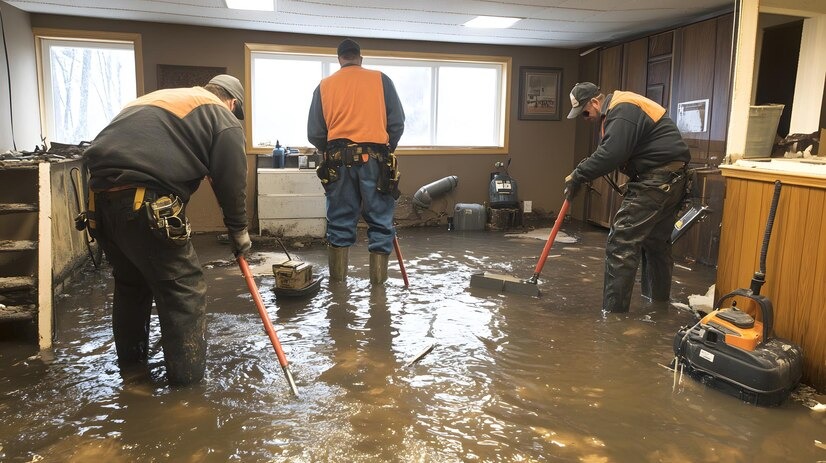Best Basement Waterproofing Systems: Protect Your Home with Sav
Basement waterproofing is one of the most critical steps in maintaining the longevity and safety of a home. Water intrusion in a basement can lead to mold growth, foundation damage, and overall property value depreciation. Therefore, choosing the best basement waterproofing systems is essential for homeowners, especially in regions prone to moisture or flooding.
In this guide, we will explore various waterproofing systems, including Kiilto’s advanced solutions like KeraSafe Rapid, KeraFiber, and Fibergum, and explain how to protect your basement effectively.
1. Why Basement Waterproofing Is Essential
Water is a home’s worst enemy, and nowhere is this more evident than in the basement. Basements, being below ground level, are particularly vulnerable to water intrusion due to factors like hydrostatic pressure, poor drainage, and weak structural integrity. Unaddressed water leaks in a basement can cause numerous issues, including:
- Mold Growth: Mold thrives in moist environments and can quickly spread through a damp basement. This can lead to health issues like allergies and respiratory problems.
- Structural Damage: Water can weaken a home’s foundation over time, leading to costly repairs. Waterlogged walls and floors can deteriorate, leading to cracks and even more significant damage.
- Pest Infestations: Dark, damp areas like a wet basement can attract pests such as termites, cockroaches, and rodents.
Given these risks, waterproofing your basement is not just about protecting your home; it’s about ensuring the safety of the people living in it.
2. What Is Basement Waterproofing waterproofing systems?
Basement waterproofing involves a combination of techniques and products that prevent water from entering your basement. It’s a proactive solution to deal with water infiltration and minimize moisture damage.
There are several types of basement waterproofing solutions:
- Interior waterproofing: This involves sealing the basement from the inside using waterproofing membranes, sealants, and coatings to keep moisture from passing through walls and floors.
- Exterior waterproofing: Exterior solutions focus on protecting the foundation and walls from water intrusion by applying waterproofing materials on the outside.
- Drainage systems: These help direct water away from your home to prevent it from pooling around the foundation.
Now, let’s delve into these waterproofing systems in more detail.
3. Types of Basement Waterproofing Systems
3.1. Interior Basement Waterproofing
Interior basement waterproofing systems focuses on keeping water out from inside your home. This method is particularly useful for dealing with minor leaks or seepage. The key interior waterproofing methods include:
- Waterproof coatings: These are applied to walls and floors to create a barrier against moisture. Epoxy, polyurethane, and latex-based coatings are popular options.
- Sealants and crack repair: Sealants, such as silicone or rubber-based products, are used to fill cracks in walls and floors, preventing water from seeping through.
- Vapor barriers: Plastic sheeting or waterproof membranes can be installed along walls to keep moisture from migrating through them.
3.2. Exterior Basement Waterproofing
Exterior waterproofing is designed to keep water away from the basement by addressing the root cause of water intrusion. It typically involves excavation and the application of waterproofing materials on the outside of the foundation.
- Foundation waterproofing membranes: High-quality waterproofing membranes are installed on the exterior of the foundation to create a moisture-proof barrier.
- Drainage systems: French drains or weeping tiles are placed around the foundation to channel water away from the home.
3.3. Basement Drainage Systems
One of the most effective ways to prevent basement flooding is by ensuring proper drainage. Without efficient drainage systems, water can pool around the foundation, leading to basement leaks.
- French drains: Installed outside or inside the basement, French drains help divert water away from your home’s foundation.
- Sump pumps: These pumps are installed in the basement to remove water that accumulates due to heavy rainfall or poor drainage.
4. Top 5 Basement Waterproofing Systems to Consider
Choosing the right waterproofing system is key to protecting your home. Here are the top 5 waterproofing systems every homeowner should consider:
1. Interior Sealant Systems
Interior sealants such as epoxy and polyurethane are ideal for dealing with minor leaks and cracks. These are affordable and easy to apply but are best suited for small-scale water issues.
2. Exterior Membrane Systems
Exterior membranes offer a long-lasting waterproofing solution by creating a barrier between the foundation and the surrounding soil. This is ideal for homes in areas with heavy rainfall or high water tables.
3. Drainage Systems
French drains and sump pumps are essential for managing water flow around the foundation. These systems are a good complement to other waterproofing methods.
4. Bentonite Waterproofing
This method involves applying a layer of bentonite clay to the exterior of the foundation. When wet, bentonite swells and forms a waterproof barrier. This natural, eco-friendly option is effective for areas with high moisture levels.
5. Kiilto Waterproofing Systems
Kiilto’s advanced waterproofing products, including the KeraSafe Rapid Waterproofing System, KeraFiber Waterproofing System, and Fibergum Waterproofing System, offer excellent protection for basements. These systems are known for their ease of application, durability, and efficiency in preventing water intrusion.
5. Kiilto Waterproofing Systems: A Leader in Basement Protection
5.1. Kiilto KeraSafe Rapid Waterproofing System
The Kiilto KeraSafe Rapid Waterproofing System is designed for fast, reliable waterproofing. It’s particularly useful in basement applications where time and efficiency are essential. The KeraSafe system features a rapid-drying waterproofing membrane, making it ideal for projects where quick turnaround is needed.
- Benefits: Rapid installation, long-lasting protection, ideal for high-moisture areas.
- Best used for: Basements in high-water-table regions or areas prone to heavy rain.
5.2. Kiilto KeraFiber Waterproofing System
The Kiilto KeraFiber Waterproofing System is reinforced with fibers, making it an incredibly durable solution for basement waterproofing. The added strength from the fibers makes it suitable for areas that may experience foundation shifts or minor structural movements.
- Benefits: Enhanced durability, flexible, strong resistance to cracking.
- Best used for: Homes in areas with unstable soil or frequent temperature changes.
5.3. Kiilto Fibergum Waterproofing System
For those looking for a flexible, easy-to-apply waterproofing solution, the Kiilto Fibergum Waterproofing System is an excellent choice. This product is highly versatile and can be used in a variety of applications, including DIY projects.
- Benefits: Flexible, easy to apply, DIY-friendly.
- Best used for: Homeowners looking for a versatile solution to small basement waterproofing issues.
6. How to Choose the Right Waterproofing System for Your Basement
Choosing the best waterproofing system for your basement depends on several factors:
- Type of basement: Is your basement finished or unfinished? Finished basements often require more comprehensive waterproofing solutions.
- Water issues: Are you dealing with minor leaks, or is flooding a regular occurrence?
- Climate: Homes in wet, rainy areas will need more robust waterproofing systems than those in dry climates.
- Budget: While some systems, like bentonite waterproofing or exterior membranes, may be costly, they provide long-term solutions that can save money on future repairs.
When choosing between systems like Kiilto KeraSafe, KeraFiber, and Fibergum, consider your home’s unique needs, budget, and climate.
7. Step-by-Step Guide to Basement Waterproofing with Kiilto Systems
7.1. Preparation
Before applying any waterproofing system, it’s essential to prepare the surface:
- Clean the surface: Ensure that the walls and floors are clean and free of dirt or debris.
- Inspect for cracks: Seal any visible cracks using appropriate products like epoxy sealants.
7.2. Applying Kiilto KeraSafe Rapid Waterproofing System
- Follow the manufacturer’s instructions for mixing and applying the KeraSafe membrane.
- Apply the membrane using a roller or brush, ensuring even coverage.
- Allow the membrane to dry according to the recommended drying time.
7.3. Installing Kiilto KeraFiber for Maximum Durability
- Mix the KeraFiber waterproofing product and apply it in layers.
- The fibers in the mixture will reinforce the waterproofing and provide additional strength against structural movement.
7.4. Using Kiilto Fibergum for DIY Basement Waterproofing
- For DIY projects, apply Fibergum using a brush or roller.
- This product is ideal for covering small leaks or sealing cracks in the basement.
8. Common Basement Waterproofing Mistakes to Avoid
When waterproofing your basement, it’s essential to avoid common mistakes that could lead to further water damage:
- Ignoring small leaks: Even minor leaks can lead to significant problems if left unaddressed.
- Skipping exterior drainage: Proper drainage is key to preventing water from pooling around your foundation.
- Using low-quality products: Inferior products may seem like a









